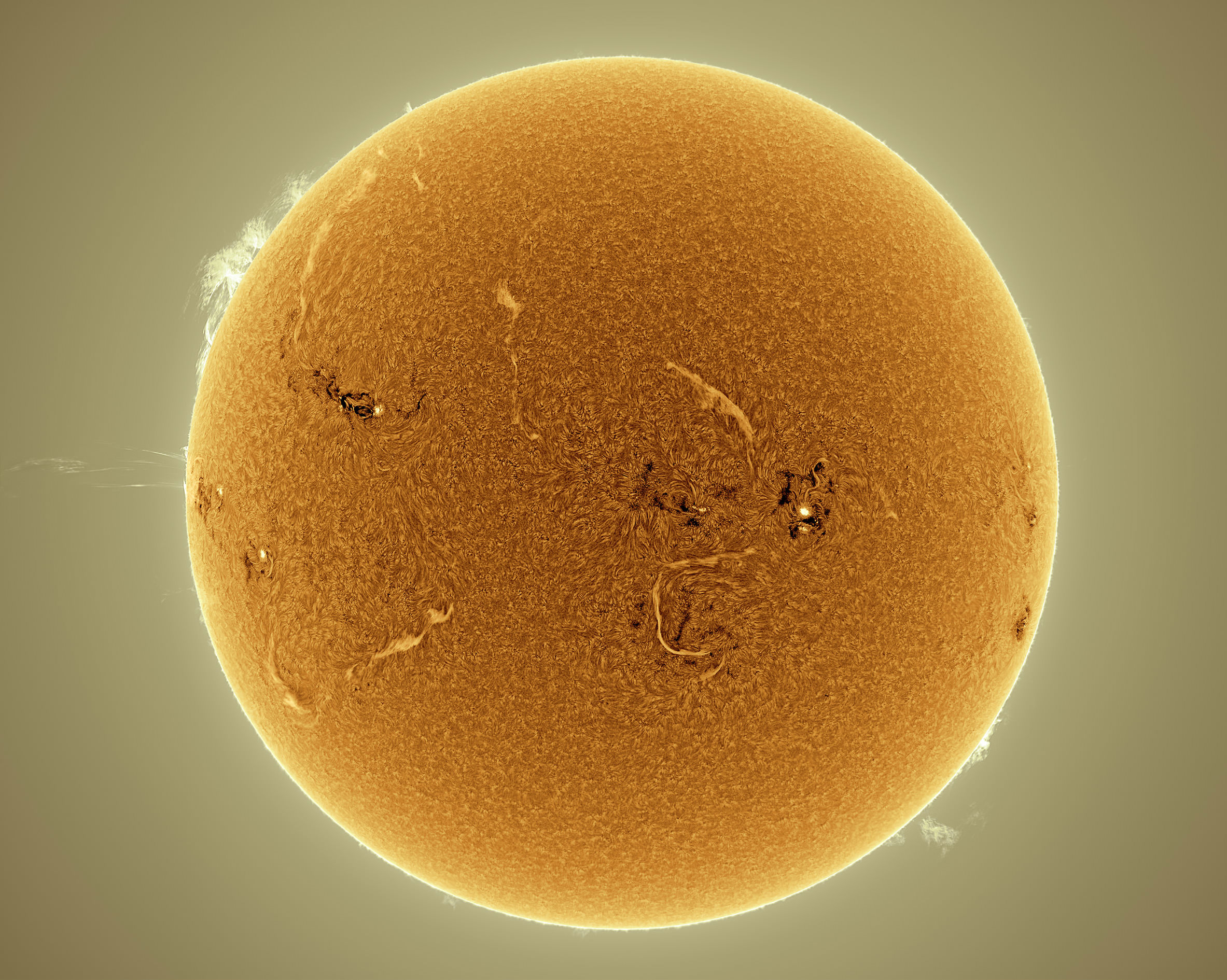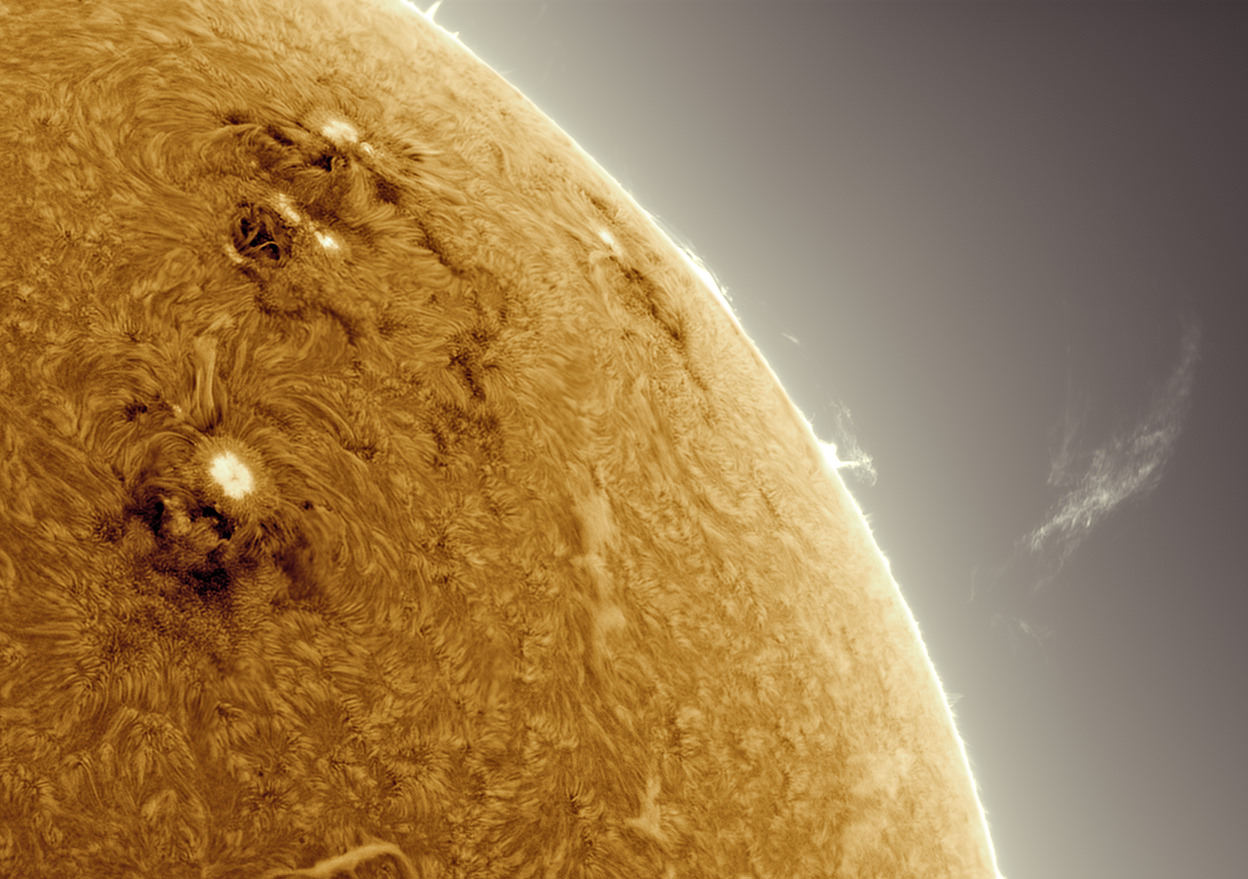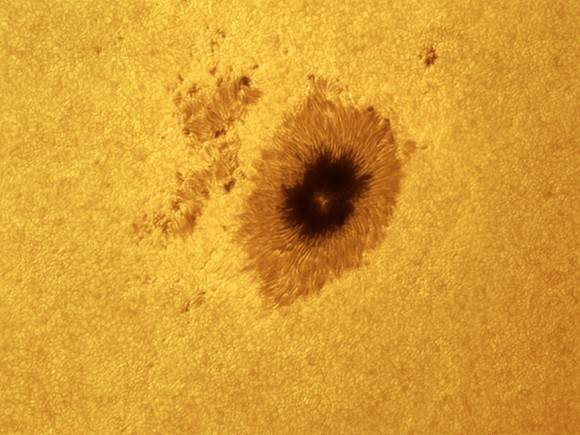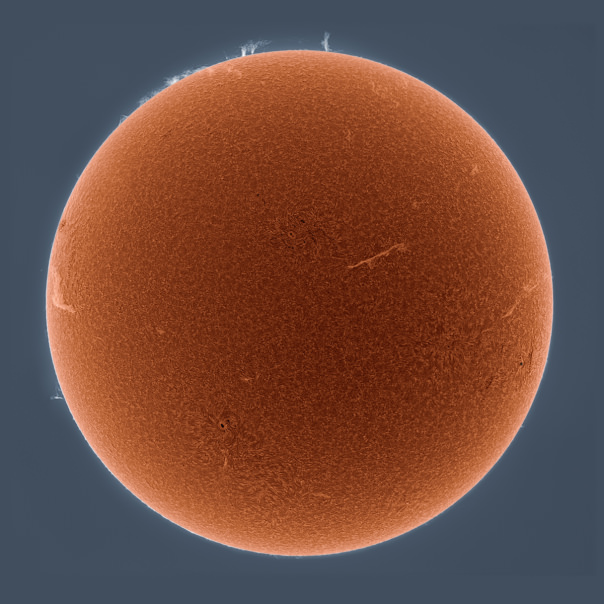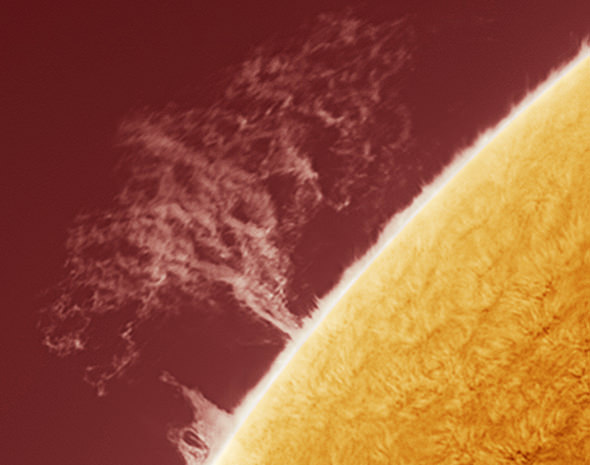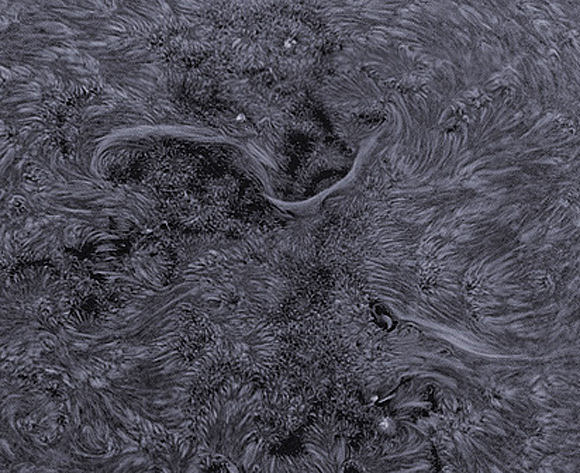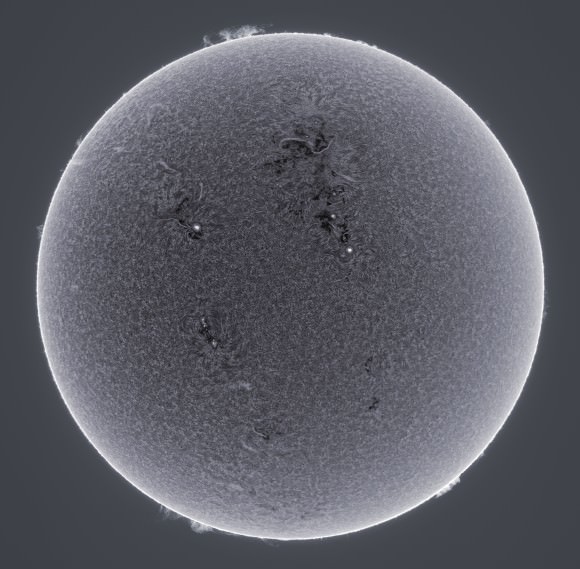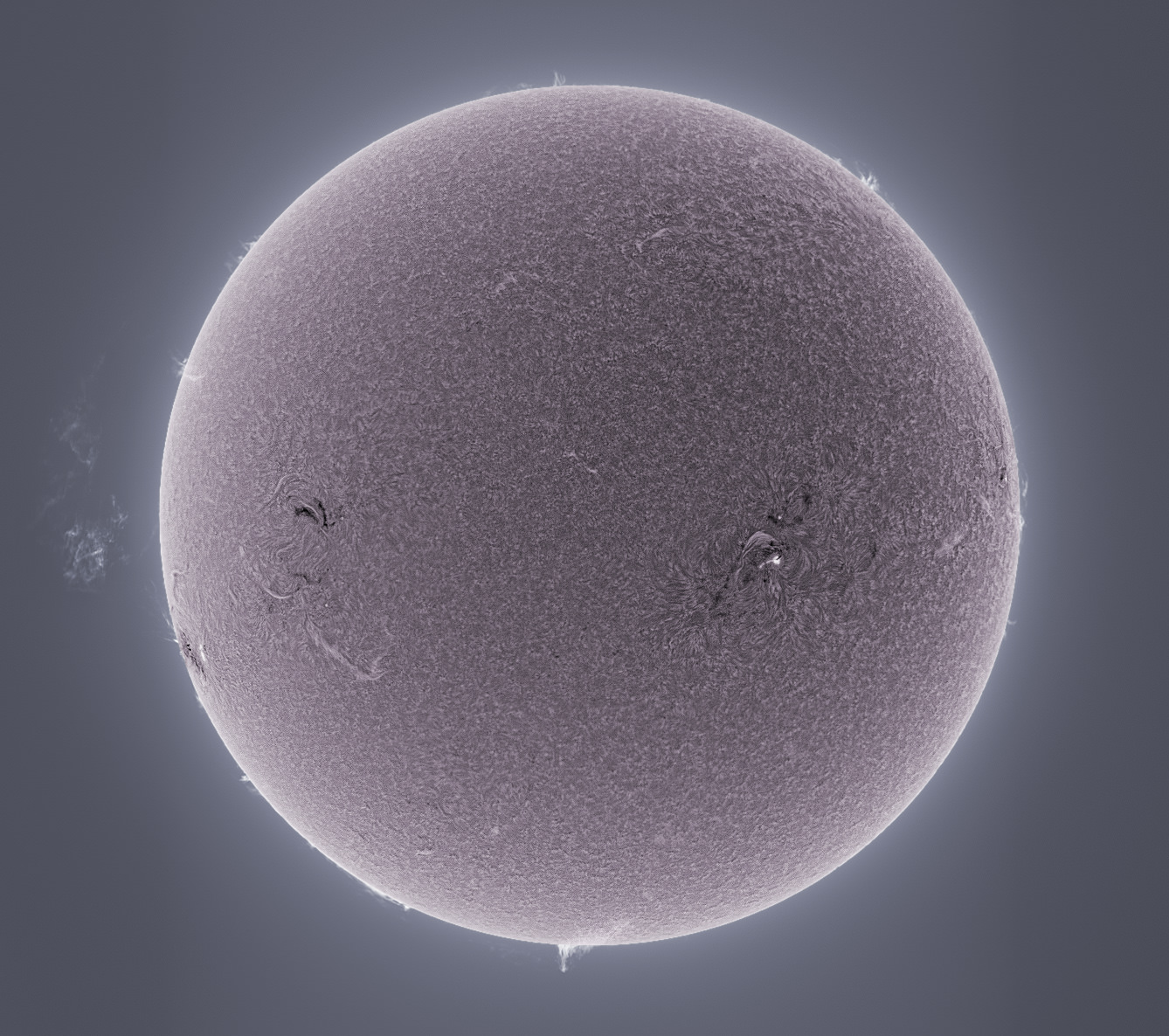Hydrogen-alpha photo of the Sun by Alan Friedman
An enormous tree-shaped prominence spreads its “branches” tens of thousands of miles above the Sun’s photosphere in this image, a section of a photo acquired in hydrogen alpha (Ha) by Alan Friedman last week from his backyard in Buffalo, NY.
Writes Alan on his blog, “gotta love a sunny day in November!”
Check out the full image — along with an idea of just how big this “tree” is — after the jump:
Taken through a special solar telescope and a Grasshopper CCD camera, Alan’s gorgeous solar photos show the Sun in a wavelength absorbed by atomic hydrogen — most present in the photosphere and chromosphere — thus revealing the complex and dynamic activity of the Sun’s “surface”.
Here’s the full image:
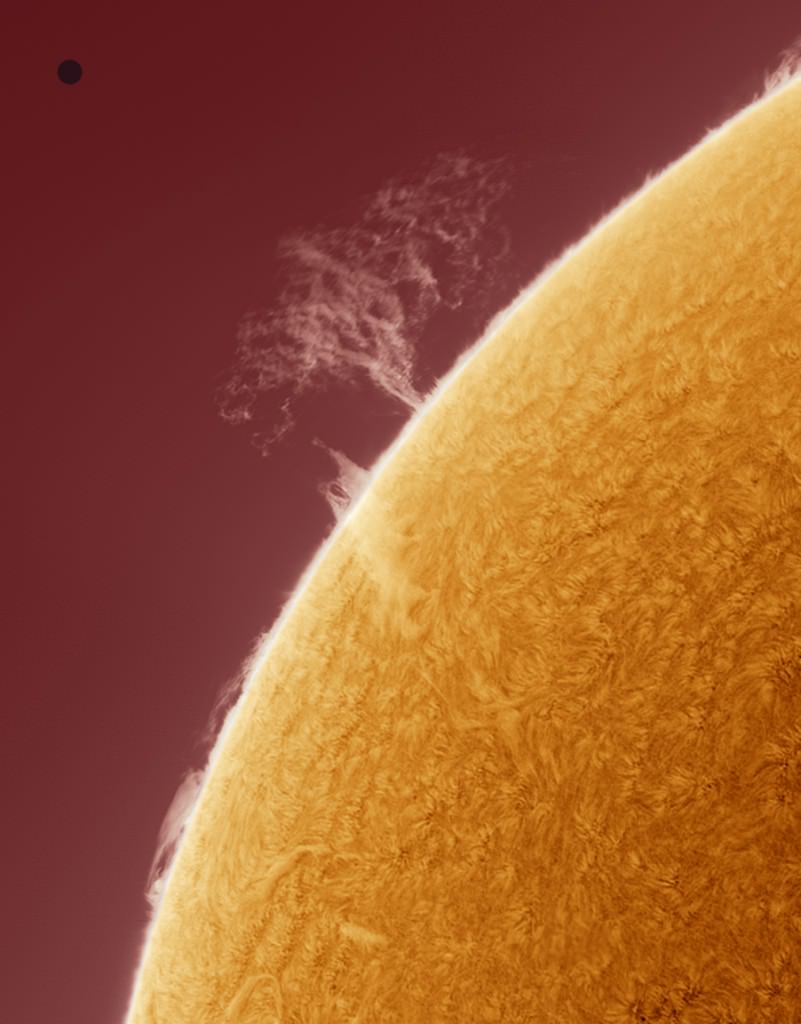
The dark circle at upper left (added by me) shows approximately the scale size of Earth (12,756 km, or about 7,926 miles diameter.) As you can see, that particular prominence is easily six times that in altitude, and spreads out many more times wider… and this isn’t even a particularly large prominence! As far as solar activity goes, this is a non-event. (Not like what was seen by SDO on Nov. 16!)
Regardless, it makes for an impressive backyard photo.
Check out more of Alan’s photos on his blog and on his website, AvertedImagination.com. Many of his photos, some of which have been shown at galleries across the U.S., are available as limited-edition prints. (Alan also runs a greeting card print studio.) I’ve found that he usually shares at least a couple of fantastic solar shots every month, if not more.
Image © Alan Friedman. All rights reserved. Used with permission.


